The Dawn of the Utility-Scale Battery Era

Following the latest press-releases and positive media coverage on the Collaboration Agreement between Zinc8 Energy Solutions Inc. and the New York Power Authority (NYPA) to deploy a 100kW/1MWh energy storage system in New York State, I was very eager to visit the company‘s facility in Vancouver and to speak to the people behind this up-and-coming battery manufacturer.
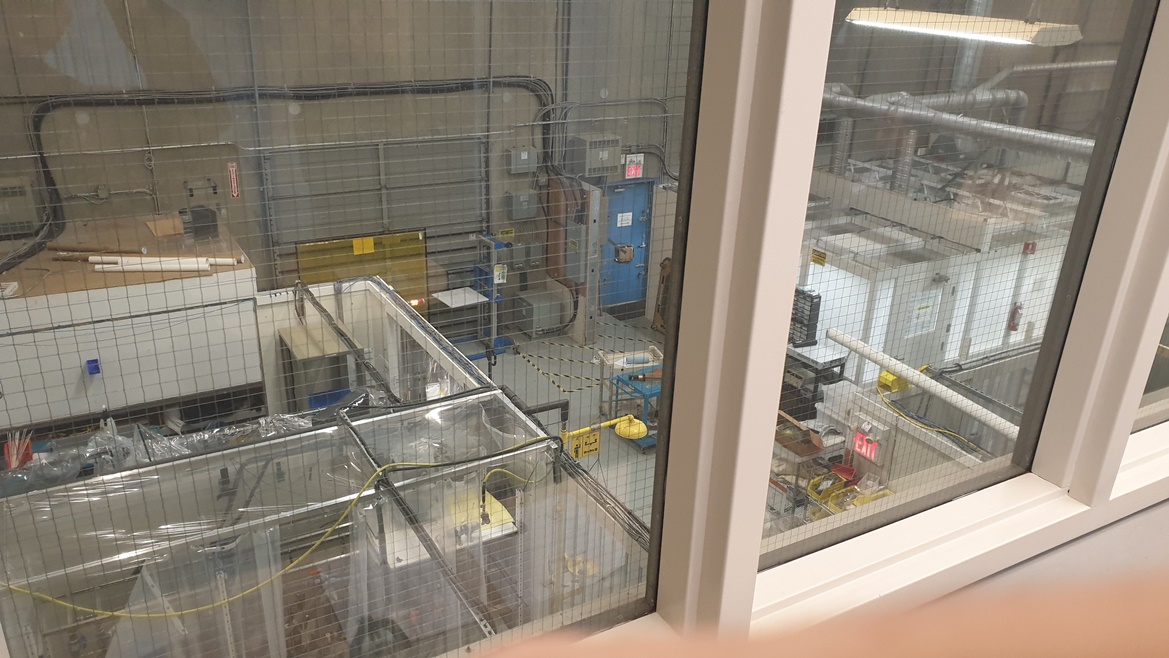
I was quite impressed by the size of the well-equipped 2-storey facility and the confidence-radiating energy of the 20 people working there to make it happen now, first and foremost thanks to the NYPA committing a total of $2.55 million USD to support the development, fabrication and installation of an energy storage system at commercial scale. In combination with today‘s closing of a non-brokered $3 million CAD private placement financing, the company appears now, more than ever, in a strong position to advance towards commercialization as fast as possible. With utility- and grid-scale energy storage said to be a big trend of this decade, I believe Zinc8 could be right on track to enter the market with a highly sought-after product and well-connected management team to become a leading battery manufacturer.
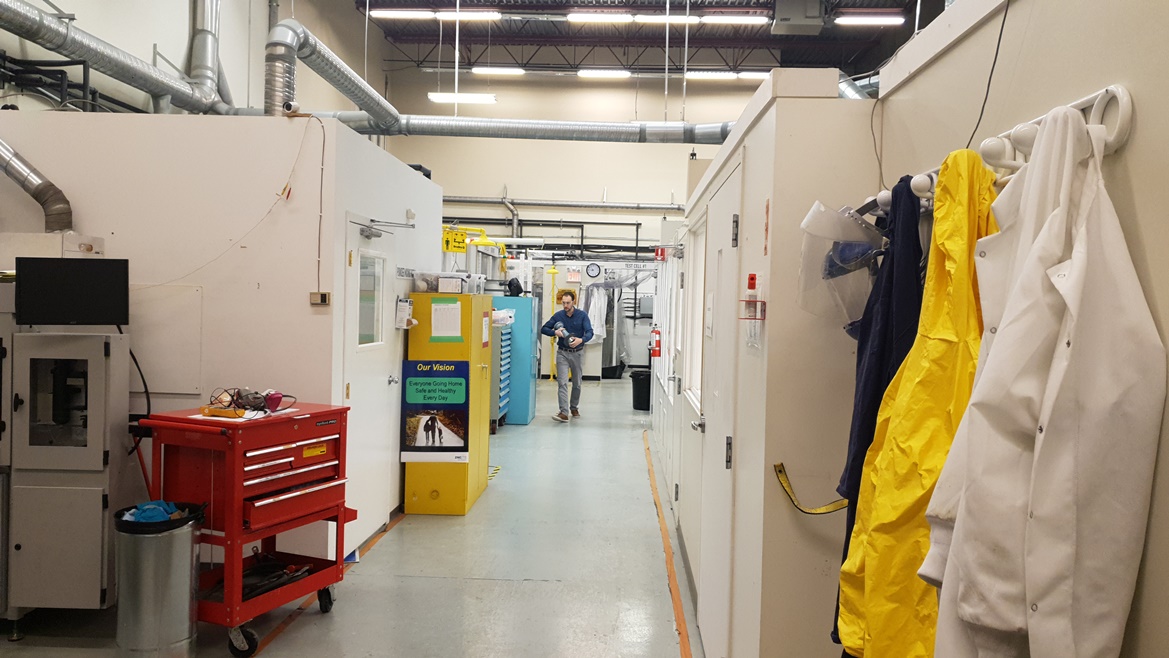
I checked the various test cell units, where components of the energy storage system are thoroughly tested in continuous operation:
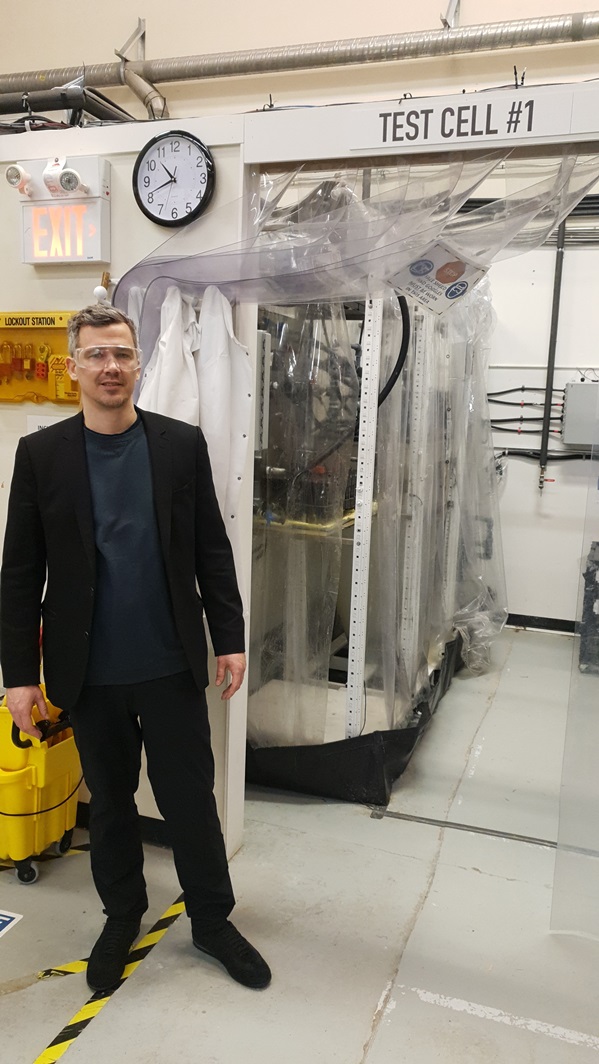
Zinc8 owns an intellectual property portfolio of 20 issued US patents (4 more patents pending). The company benefits from strategic alliances with the National Research Council of Canada, the University of British Columbia and the Simon Fraser University.
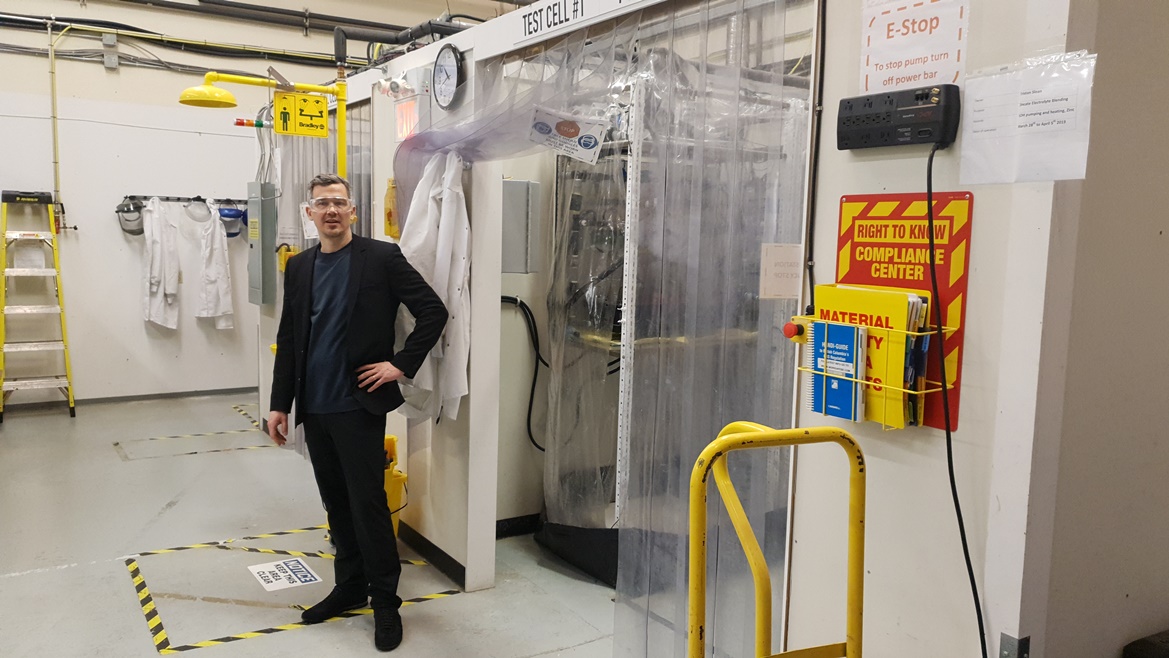
As of September 2019, Zinc8 has produced 300 next-generation carbon-based cathodes for use in its mass storage battery systems as each 5kW fuel cell stack utilizes 50 cathodes. The company has developed proprietary and patented fuel cell and battery technology and will continue to specialize in the design and manufacture of cathodes in-house. The planned initial scale-up of cathode production is for 36MW of annual equivalent capacity with a minimum storage of 8 hours or 288MWh of storage followed by the addition of similar scale fabrication machinery as necessary. Zinc8 continues to develop a hybrid manufacturing strategy of leveraging its proprietary designs utilizing fabrication partners for standardized components such as injection molded pieces, with the most technically advanced and proprietary components, such as the fuel cell cathode, being manufactured in-house.

The equipment at the facility is extensive and top-quality, making the heart of every battery fan beat faster:

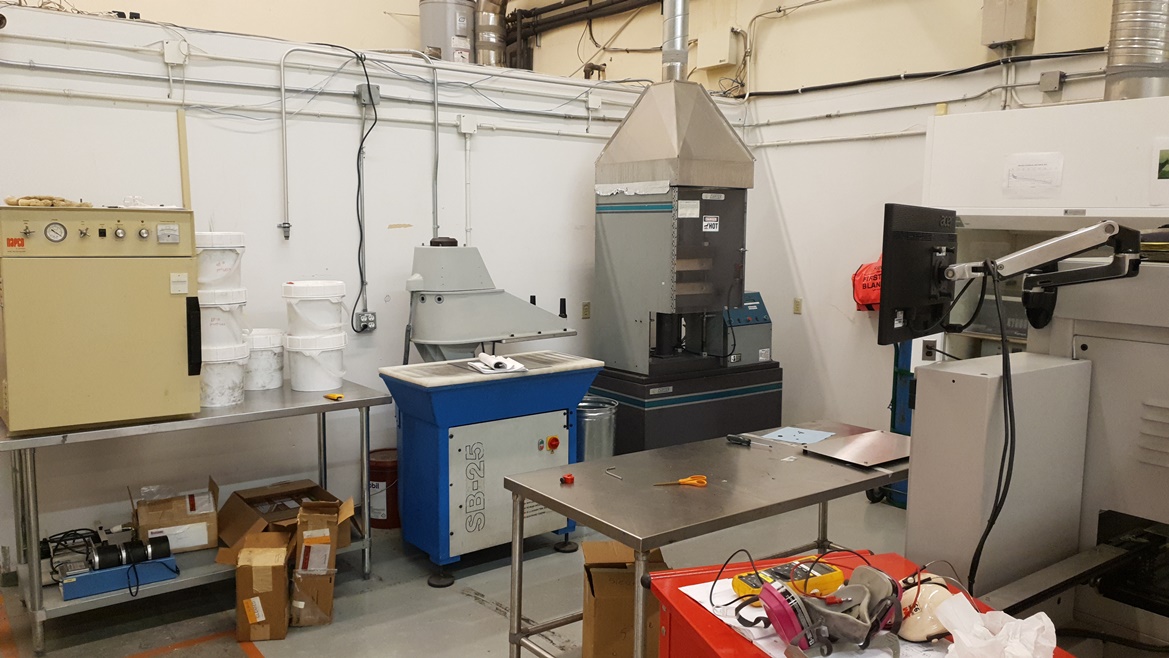


The zinc-air battery system is relatively simple to manufacture using conventional production methods in-house and outsourcing standardized high-volume production methods such as injection molding, die casting and extrusion – in other words, this battery technology does not require its own factory as Tesla does with its Gigafactory. Moreover, Zinc8‘s energy storage system contains none of the traditional high-cost commodities such as lithium, vanadium, or cobalt. The materials used in the manufacture of a full Zinc8 battery system are relatively inexpensive and plentiful (i.e. readily available worldwide): zinc, magnesium, nickel, carbon, and plastics.
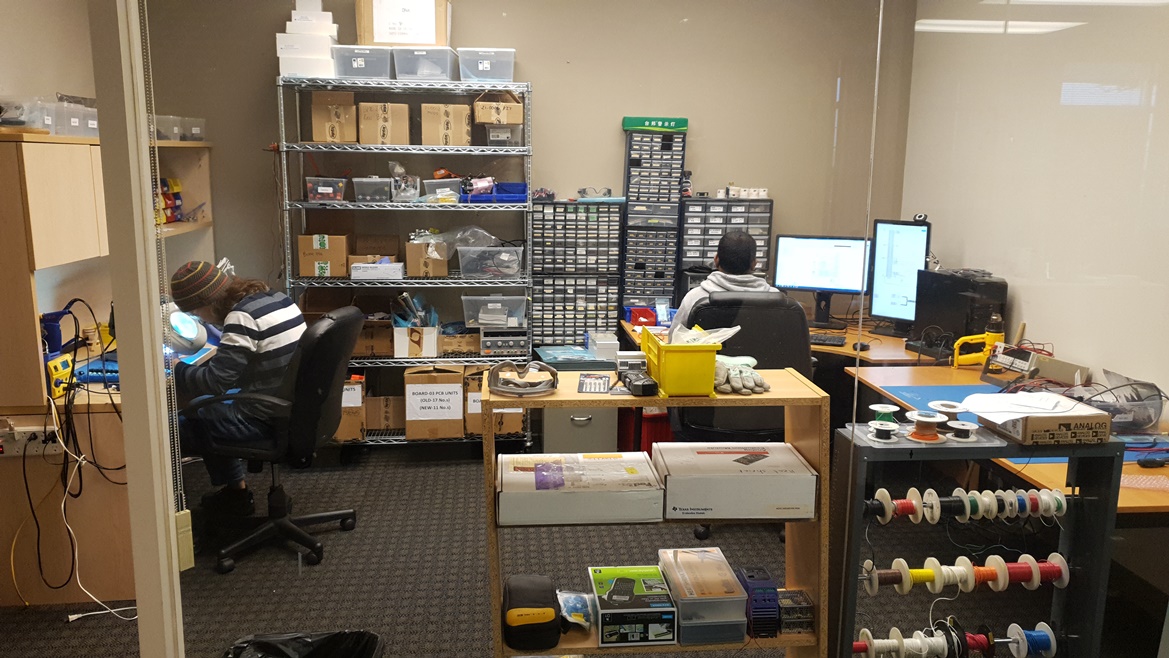
This is where the patented membrane (the separator between the battery‘s anode and cathode) is produced in-house:

One of the many offices within the facility:
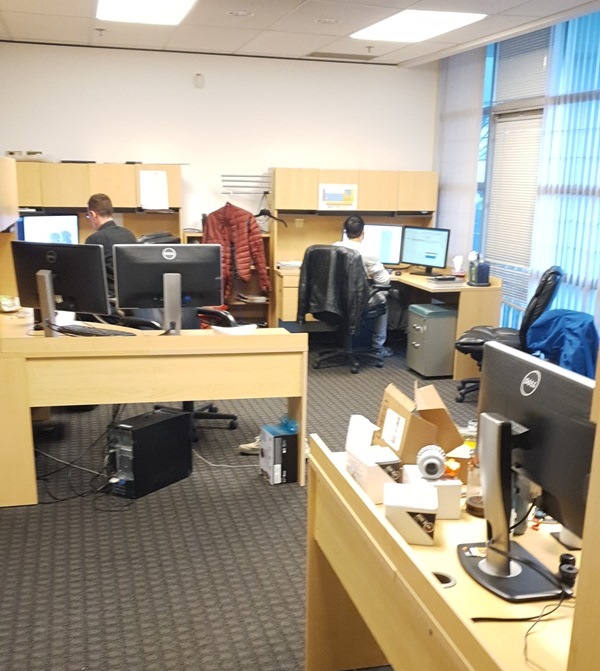
Special thanks to John McLeod, Zinc8‘s Chief Operations Officer and VP Engineering, for showing me around and explaining tirelessly virtually every detail of the company‘s unique battery technology:

Mr. McLeod is an Electrical Engineer with over 40 years‘ experience in leading the development of successful commercial products. He is a Member of the Institution of Engineering and Technology (IET) and a Chartered Engineer (C.Eng.). He holds a B.Sc. in Electrical Engineering from the University of St. Andrews and an M.Sc. in Telecommunication Systems from the University of Essex. See more details on Mr. McLeod’s career here.
It was also great seeing Zinc8‘s President and CEO Ron MacDonald in action at the facility:

Mr. MacDonald has over 35 years of both public and private sector experience, ranging from international roles within the Parliament of Canada to serving on the boards of publicly listed companies. From 1988 to 1997, he was the Member of Parliament for Halifax, Nova Scotia, during which time he was appointed by the Prime Minister of Canada as Parliamentary Secretary of International Trade. From 1997-2002, Mr. MacDonald was President and CEO of the Council of Forest Industries (COFI), a large lumber manufacturing, grading and marketing group, where he developed new markets in China, Korea, India and Japan. In recent years Mr. MacDonald has served as President of NRStor Remote Communities & Mines, a Canadian company focused on partnering with off-grid Indigenous communities and mines to develop renewable energy and energy storage projects. For more details on Mr. MacDonald´s background, visit Wikipedia.
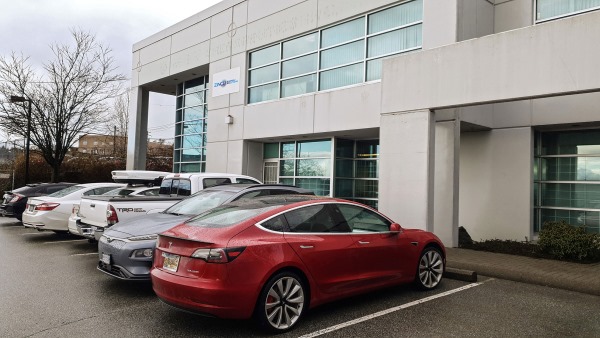
The Dawn of the Utility-Scale Battery Decade
On December 30, 2019, CNBC published the article "The battery decade: How energy storage could revolutionize industries in the next 10 years", explaining that large-scale, effective batteries "hold the key to transitioning to a renewable-fueled world" and that utility-scale energy storage is the big trend of this decade:
"What a difference a decade can make. In 2010, batteries powered our phones and computers. By the end of the decade, they are starting to power our cars and houses too. Over the last ten years, a surge in lithium-ion battery production drove down prices to the point that – for the first time in history – electric vehicles became commercially viable from the standpoint of both cost and performance. The next step, and what will define the next decade, is utility-scale storage. As the immediacy of the climate crisis becomes ever more apparent, batteries hold the key to transitioning to a renewable-fueled world. Solar and wind are playing a greater role in power generation, but without effective energy storage techniques, natural gas and coal are needed for times when the sun isn’t shining or the wind isn’t howling. And so large scale storage is instrumental if society is to shift away from a world dependent on fossil-fuel...UBS estimates that over the next ten years the energy storage market in the United States could grow to as much as $426 billion, and there are many ways to buy into the surge, including chemical companies, battery cell makers, car companies, solar companies and utility companies."
On January 27, 2020, a bit more than a week after the NYPA – the largest state-owned power utility in the United States – announced the cooperation with Zinc8, UtilityDive.com published the article "NYPA turns to zinc-air storage amid lithium-ion safety concerns", making the following remarks:
"Lithium-ion batteries currently dominate the battery storage market, but zinc-air technology has its own appeal – especially since it‘s inexpensive, made with widely abundant materials, and is easy to dispose of, according to Jason Burwen, vice president of policy at the Energy Storage Association. »Zinc is pretty low when it comes to toxicity. So that impact on both cost and the handling and ultimate disposal of batteries makes it so that there‘s a reason why folks are really interested to push zinc forward,« he told Utility Dive... NYPA chose this [Zinc8 battery system] in part because the technology appeared to be further along in the research realm, [Alan] Ettlinger said [who is NYPA‘s Director of Research, Technology Development and Innovation]. Zinc also does not have any of the fire safety concerns associated with lithium-ion. »Really, the only batteries being used right now for energy storage are lithium-ion batteries and there‘s a significant fire risk in using those batteries. So what this does is use zinc and, as a result of a chemical reaction, it produces electricity which we then use as a means for actually storing the energy,« he said... After piloting this project, NYPA plans to look into expanding to a larger-sized battery and eventually moving on to something grid-scale. »It‘s early technology, but [with] our research of the papers and what‘s out in the industry, we think this shows a tremendous amount of promise,« Ettlinger said."
On the same day, renowned pv magazine USA published the article "Zinc-air battery being deployed in New York aims for extremely low $45/kWh cost" with the following comment:
"New York state has signed a deal to procure a new 100 kW/1 MWh zinc-air battery from Canadian company Zinc8 Energy... Zinc8’s CEO sees this system as being potentially upgraded to 1 MW in power over the next couple of years. The company‘s website claims it is aiming for an installation cost of $45/kWh. For comparison‘s sake, Bloomberg NEF recently reported that battery prices have fallen 87%, from $1,100/kWh in 2010 to $156/kWh in 2019, with an expectation of nearing $100/kWh by 2023. Zinc8 stated that to reach those $45/kWh prices, the product needs to be sized with more than eight hours of capacity relative to its instantaneous power. Zinc8‘s website claims that $45/kWh is a viable potential cost for its hardware... A smaller residential community system was announced in September of 2019. The 40 kW/160 kWh system is to be deployed in an award-winning architecturally designed home in South Surrey, British Columbia, Canada. Construction at the home is ongoing, with the energy storage system to begin its installation and commissioning in Q2/Q3 of this year. The below image is something very different than any home I’ve lived in — and the under-construction image on Instagram by the architect, is something to see."
On January 29, the Kansas Power Pool (one of two municipal energy agencies in Kansas) published the article "NYPA AWARDS 1 MWH FLOW BATTERY PROJECT TO ZINC8 ENERGY SOLUTIONS", noting the following:
"NYPA‘s research and development group is looking at alternative energy storage technologies to lithium ion technologies that offer the potential of longer duration energy discharge and improved fire safety. »We‘re primarily interested in non-lithium ion batteries,« Alan Ettlinger, NYPA’s director of research, technology development and innovation, said... The agreement between NYPA and Zinc8 will result in »sales earned out of the technology« and aims to help commercialize flow battery technology at grid scale, Ettlinger said. »As far as we know, it would be the first of its kind zinc-air flow battery deployed in New York State,« he added. The Zinc8 technology chosen is a flow battery that produces energy by passing an electrolyte through a membrane and can store energy by reversing the process. While lithium ion batteries have dominated the energy storage market, the economics and applications are better suited for limited discharge of about four hours. Zinc8 says its technology can discharge for a minimum of eight hours. In addition, flow batteries are generally safer than li-ion batteries that can malfunction and cause explosions or fires. In April, a li-ion energy storage installation in Surprise, Arizona exploded, sending eight emergency responders to the hospital. New York City in 2016 set an energy storage deployment target of 100 MWh by 2020, but has been slow to reach its target because of strict fire safety restrictions in the densely populated city."
Other publications on the cooperation between the NYPA and Zinc8:
SPGlobal.com, SmallCapNework.com, NSEnergyBusiness.com, NACleanEnergy.com,
NAWindPower.com, RenewablesNow.com, PublicPower.org, ProactiveInvestors.com,
ResourceClips.com, KLGates.com, Eastmoney.com, Rinnovabili.it
Recent interviews with Zinc8’s CEO and President, Ron Macdonald:
Source: BNN Bloomberg https://youtu.be/9zchqBlFumY
Source: Proactive Investors https://youtu.be/PKnbIB3J_y4

Source: Kevin Price, host of the US nationally syndicated Price of Business Show, said “this company is making the pursuit of the ‘Holy Grail’ of renewable energy a reality." https://soundcloud.com/user-759550640/01-23-2020-ron-macdonald
In mid-2018, TechnologyReview.com published the article "The $2.5 trillion reason we can’t rely on batteries to clean up the grid", obviously not taking the up-and-coming zinc-air battery technology from Zinc8 Energy Solutions into account, but nevertheless making relevant remarks about why lithium-ion might not be the solution for utility-scale energy storage requirements:
"These [lithium-ion] batteries are far too expensive and don‘t last nearly long enough, limiting the role they can play on the grid, experts say. If we plan to rely on them for massive amounts of storage as more renewables come online...we could be headed down a dangerously unaffordable path. Not only is lithium-ion technology too expensive for this role, but limited battery life means it’s not well suited to filling gaps during the days, weeks, and even months when wind and solar generation flags. This problem is particularly acute in California, where both wind and solar fall off precipitously during the fall and winter months. This leads to a critical problem: when renewables reach high levels on the grid, you need far, far more wind and solar plants to crank out enough excess power during peak times to keep the grid operating through those long seasonal dips, says Jesse Jenkins, a coauthor of the study and an energy systems researcher. That, in turn, requires banks upon banks of batteries that can store it all away until it’s needed. And that ends up being astronomically expensive... And that‘s assuming lithium-ion batteries will cost roughly a third what they do now."
Bottom Line
Zinc8‘s unique zinc-air energy storage system is not just another battery technology to grab some market share from lithium-ion, but rather it may soon turn out as a highly sought-after solution for the global utility industry to make renewable energy reach its destiny of effectively combating climate change as always hoped for, but never having achieved its full potential thus far. The time has come for Zinc8 to bank on the dawn of the utility-scale battery era as a leading-edge energy storage company.

The Zinc8 energy storage system is composed of 3 major subsystems: The zinc regeneration subsystem, the fuel storage subsystem and the power generation subsystem. Each subsystem can be sized according to the application requirements: Regeneration capacity (kW), energy storage capacity (kWh) and power generation capacity (kW). The separation of functions enables each subsystem to be optimized for its application and to utilize the most cost-effective and durable materials.
Zinc8‘s unique zinc-air battery is an innovative mass energy storage system which can be readily scaled from kilowatt to megawatt range relatively inexpensive thanks to it’s modular architecture. The system emits no greenhouse gases or pollutants and does not contain any heavy metals – it‘s running on a non-toxic, non-explosive and non-flammable chemistry, and as such is one of the safest and environmentally cleanest rechargeable energy storage systems ever developed. It‘s a closed system and because there is no build-up of dendrites and no corrosion, the zinc does not need to be refueled.
The zinc particles are charged by solar, wind, hydropower or any other source of energy, whereafter the charged zinc "fluid" is pumped into the fuel tank, where the energy is stored and then, on demand, is pumped into the fuel cells and then back to the regeneration area to be recharged. Unlike conventional batteries such as lithium-ion, which have a fixed energy/power ratio, Zinc8 uses a fuel tank system that offers flexible energy/power ratios and scalability. The storage capacity is directly tied to the size of the fuel tank and quantity of charged zinc fuel, making scalability a major advantage of this flow battery. Another major advantage of the system is the ability to charge and discharge simultaneously and at different maximum charge or discharge rates as each of the charge and discharge circuits is separate and independent. Other types of standard and flow batteries are limited to a maximum charge and discharge by the total number of cells as there is no separation of the charge, discharge and size of the fuel storage system. For more details, see Zinc8´s corporate presentation.
Previous Coverage
Report #3: “The Largest State-Owned Power Utility in the USA Announces Collaboration with Zinc8 Energy Solutions“
Report #2: “MGX Renewables becomes Zinc8 Energy Solutions“
Report #1: “Bridging the Renewable Energy Infrastructure Gap“
Company Details

Zinc8 Energy Solutions Inc. (dba) /
MGX Renewables Inc.
#1 – 8765 Ash Street
Vancouver, BC, Canada V6P 6T3
Phone: +1 604 558 1406
investors@zinc8energy.com
www.mgxrenewables.com
ISIN: CA59325P1080 / CUSIP: 59325P108
Shares Issued & Outstanding: 75,003,042

Chart
Canada Symbol (CSE): MGXR
Current Price: $0.30 CAD (02/10/2020)
Market Capitalization: $22 Million CAD
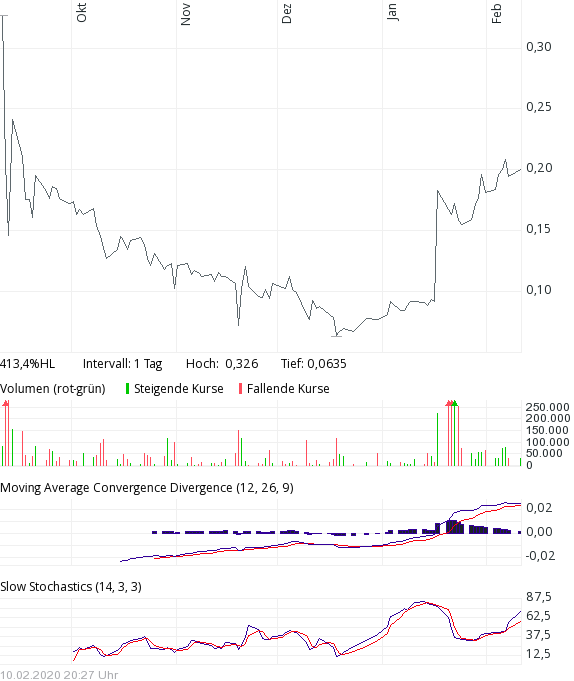
Chart
Germany Symbol / WKN (Tradegate): 0E9 / A2PNN3
Current Price: €0.20 EUR (02/10/2020)
Market Capitalization: €15 Million EUR
Contact:
Rockstone Research
Stephan Bogner (Dipl. Kfm.)
8260 Stein am Rhein, Switzerland
Phone: +41-44-5862323
Email: info@rockstone-research.com
www.rockstone-research.com
Disclaimer: This report contains forward-looking information or forward-looking statements (collectively "forward-looking information") within the meaning of applicable securities laws. Forward-looking information is typically identified by words such as: "believe", "expect", "anticipate", "intend", "estimate", "potentially" and similar expressions, or are those, which, by their nature, refer to future events. Rockstone Research, Zinc8 Energy Solutions Inc. / MGX Renewables Inc. and Zimtu Capital Corp. caution investors that any forward-looking information provided herein is not a guarantee of future results or performance, and that actual results may differ materially from those in forward-looking information as a result of various factors. The reader is referred to the iZnc8 Energy Solutions Inc. / MGX Renewables Inc.´s public filings for a more complete discussion of such risk factors and their potential effects which may be accessed through their profiles on SEDAR at www.sedar.com. Please read the full disclaimer within the full research report as a PDF (here) as fundamental risks and conflicts of interest exist. Zinc8 Energy Solutions Inc. / MGX Renewables Inc. pays Zimtu Capital Corp. to provide this report and other investor awareness services.The author, Stephan Bogner, holds a long position in Zinc8 Energy Solutions Inc. / MGX Renewables Inc. and is being paid by Zimtu Capital Corp. for the preparation and distribution of this report, whereas Zimtu Capital Corp. also holds a long position in Zinc8 Energy Solutions Inc. / MGX Renewables Inc.